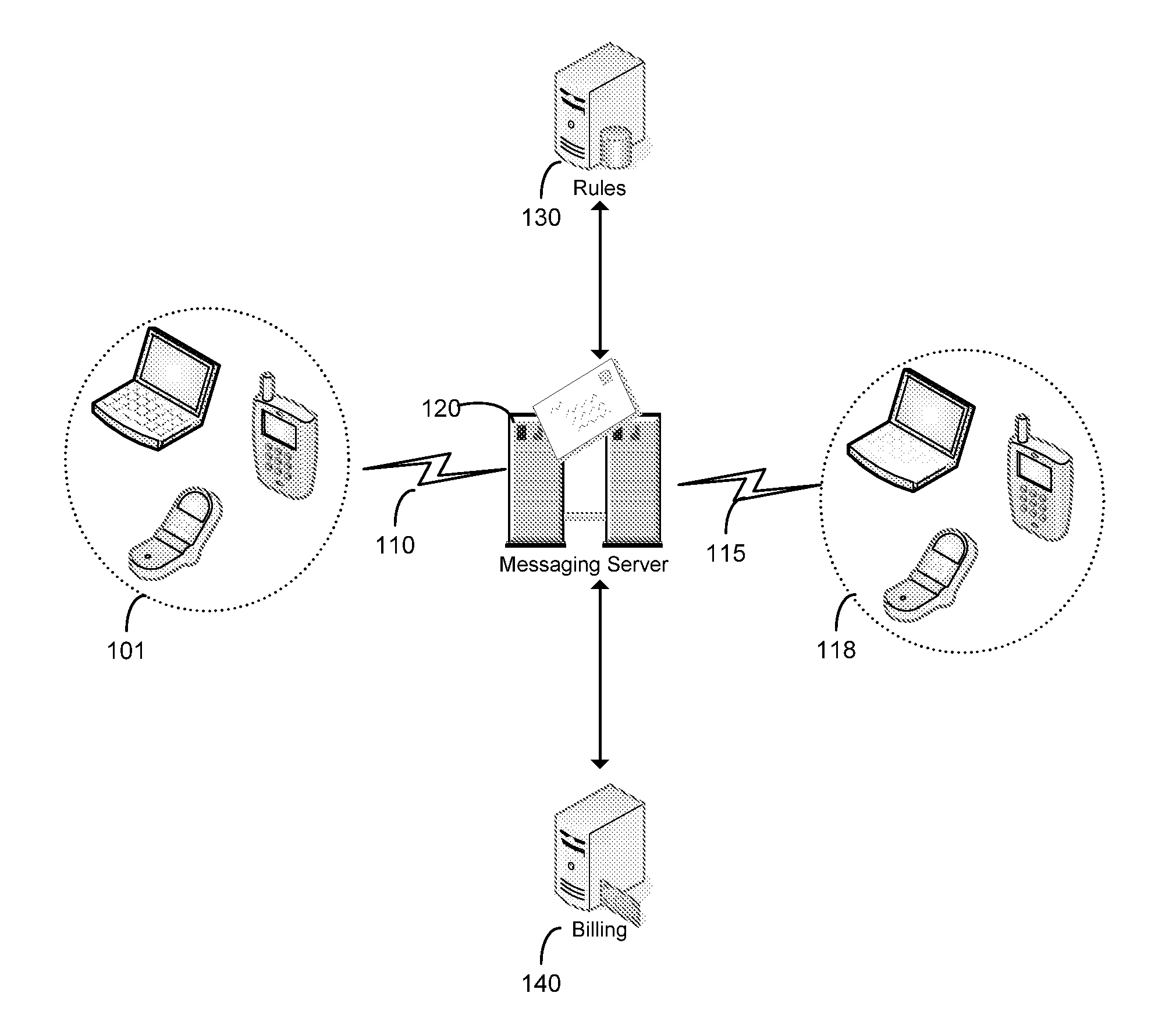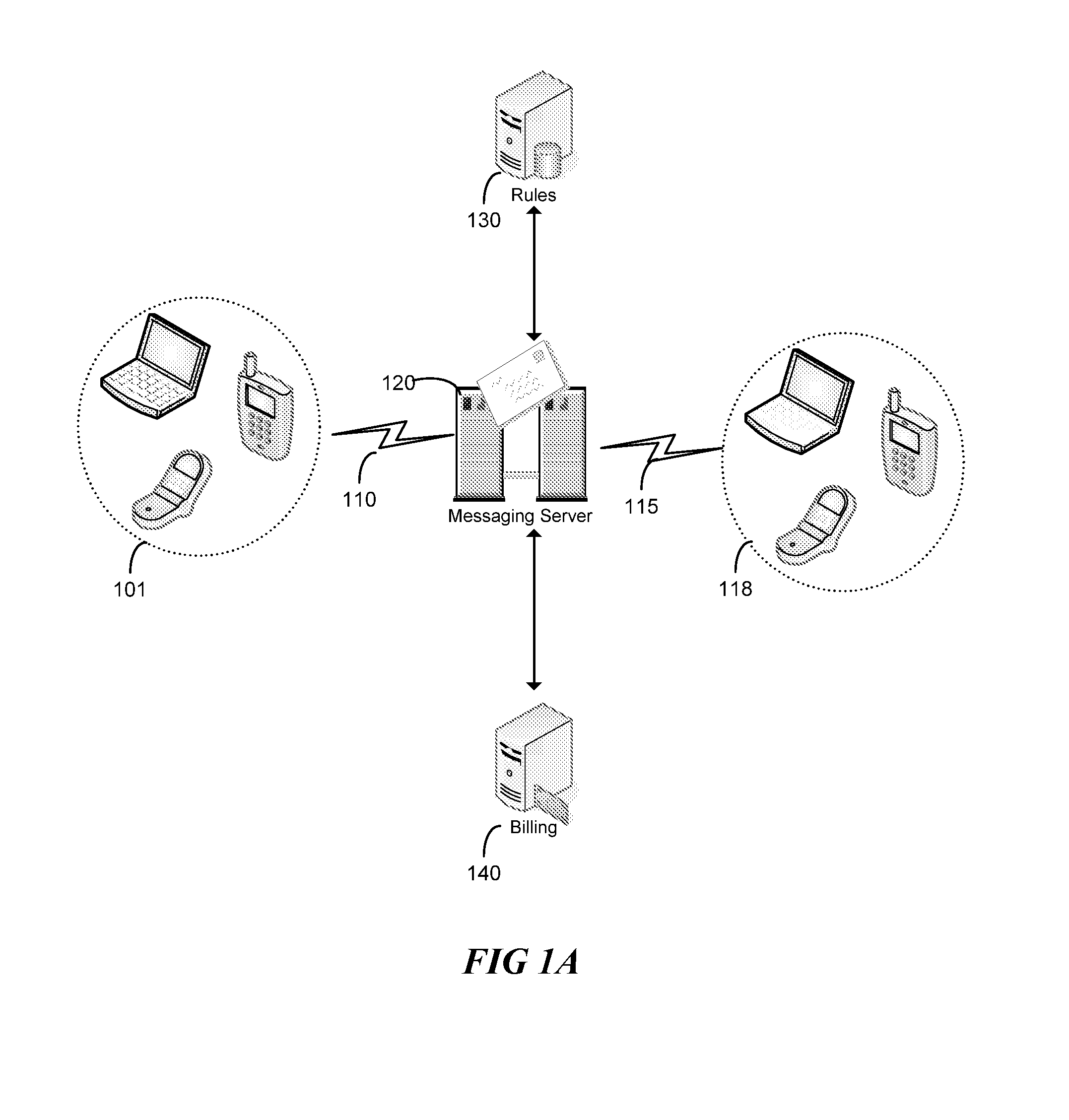Intelligent Real Time Billing for Messaging
a text messaging and intelligent technology, applied in the field of text messaging, can solve the problems of high customer bill, loss of mobile operator or service provider revenue, and insufficient pre-paid accounts of subscribers, and achieve the effects of increasing the revenue of service providers, efficient processing, and faster processing
- Summary
- Abstract
- Description
- Claims
- Application Information
AI Technical Summary
Benefits of technology
Problems solved by technology
Method used
Image
Examples
Embodiment Construction
[0022]The present invention improves the functionality of existing text message realtime billing infrastructures. This is achieved by introducing a set of related flexible options for the service provider to control the frequency and priority of billing requests that are submitted to the billing server. Additionally, based on the number and type of billing requests going into the billing server, the billing server may process the billing requests dynamically corresponding to the request priority based on available system resources. The logic for this functionality can be placed either within the messaging gateway, or anywhere else on the network to achieve the effect. In an exemplary embodiment, the present invention provides the ability for a service provider to define and control queue groups for billing requests during periods of high usage. This is especially applicable to scenarios such as text message voting, where it is imperative that large numbers of messages are accounted ...
PUM
 Login to View More
Login to View More Abstract
Description
Claims
Application Information
 Login to View More
Login to View More - R&D
- Intellectual Property
- Life Sciences
- Materials
- Tech Scout
- Unparalleled Data Quality
- Higher Quality Content
- 60% Fewer Hallucinations
Browse by: Latest US Patents, China's latest patents, Technical Efficacy Thesaurus, Application Domain, Technology Topic, Popular Technical Reports.
© 2025 PatSnap. All rights reserved.Legal|Privacy policy|Modern Slavery Act Transparency Statement|Sitemap|About US| Contact US: help@patsnap.com



